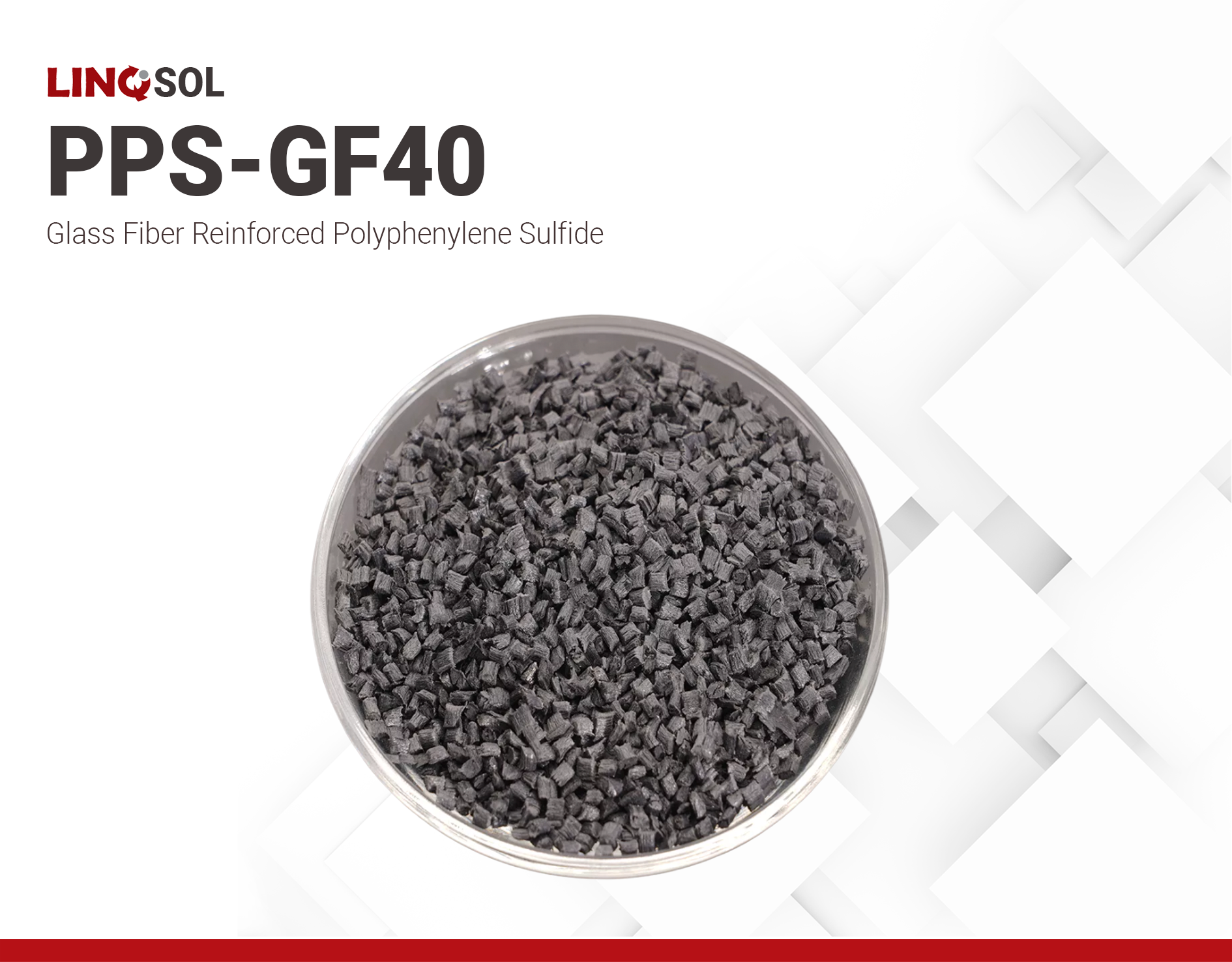LINQSOL PPS-GF40 | Glass Fiber Reinforced Polyphenylene Sulfide
Main features
- Excellent corrosion resistance
- High heat resistance
- Remarkable mechanical properties
Product Description
LINQSOL PPS-GF40 is a 40% glass fiber reinforced polyphenylene sulfide (PPS) material with remarkable mechanical properties and heat & chemical corrosion resistances. PPS-GF40 has a wide array of applications, including smart homes, smart information terminals, and home appliances.
LINQSOL PPS-GF40 can be used in manufacturing terminal shells and coatings for 5G applications, as well as protective materials for industrial automation, telemedicine, and autonomous driving.
Technical Specifications
| General Properties | |||||
| Specific Gravity Specific Gravity Specific gravity (SG) is the ratio of the density of a substance to the density of a reference substance; equivalently, it is the ratio of the mass of a substance to the mass of a reference substance for the same given volume. For liquids, the reference substance is almost always water (1), while for gases, it is air (1.18) at room temperature. Specific gravity is unitless. | 1.66 | ||||
| Chemical Properties | |||||
| Water Absorption | 0.02 % | ||||
| Mechanical Properties | |||||
| Elongation Elongation Elongation is the process of lengthening something. It is a percentage that measures the initial, unstressed, length compared to the length of the material right before it breaks. It is commonly referred to as Ultimate Elongation or Tensile Elongation at break. | 2.2 % | ||||
| Molded Shrinkage | 0.3-0.6 % | ||||
| |||||
| |||||
| |||||
| Thermal Properties | |||||
| |||||
| UL 94 Rating UL 94 Rating Flammability rating classification. It determines how fast a material burns or extinguishes once it is ignited. HB: slow burning on a horizontal specimen; burning rate less than 76 mm/min for thickness less than 3 mm or burning stops before 100 mm V-2: burning stops within 30 seconds on a vertical specimen; drips of flaming particles are allowed. V-1: burning stops within 30 seconds on a vertical specimen; drips of particles allowed as long as they are not inflamed. V-0: burning stops within 10 seconds on a vertical specimen; drips of particles allowed as long as they are not inflamed. 5VB: burning stops within 60 seconds on a vertical specimen; no drips allowed; plaque specimens may develop a hole. 5VA: burning stops within 60 seconds on a vertical specimen; no drips allowed; plaque specimens may not develop a hole | V-0 | ||||
| Curing Conditions | |||||
| |||||
Additional Information
Property | Value | Unit |
Injection Molding Conditions | ||
Drying temperature | 130-150 | ℃ |
Drying time | 3-4 | hours |
Heating temperature of cylinder | 290-320 | ℃ |
Nozzle temperature | 300-320 | ℃ |
Mold temperature | 130-150 | ℃ |
Injection pressure | 80-150 | MPa |
Packing pressure | 30-70 | MPa |




